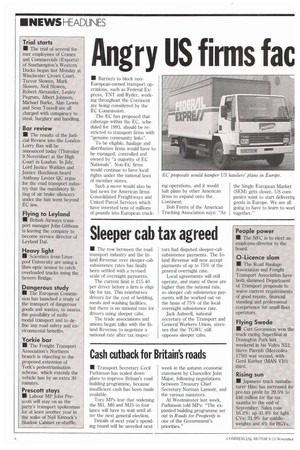Sleeper cab tax agreed
Page 6

If you've noticed an error in this article please click here to report it so we can fix it.
• The row between the road transport industry and the Inland Revenue over sleeper-cab subsistence rates has finally been settled with a revised scale of overnight payments. The current limit is 215.40 per driver before a firm is eligible for tax. This reimburses drivers for the cost of bedding, meals and washing facilities, but there is no national rate for drivers using sleeper cabs. The trade associations and unions began talks with the Inland Revenue to negotiate a national rate after tax inspec tors had disputed sleeper-cab subsistence payments. The Inland Revenue will now accept payments of up to 75% of the general overnight rate. Local agreements will still operate, and many of these are higher than the national rate, so sleeper cab subsistence payments will be worked out on the basis of 75% of the local overnight subsistence rate. Jack Ashwell, national secretary of the Transport and General Workers Union, stresses that the TGWU still opposes sleeper cabs.




























































































































